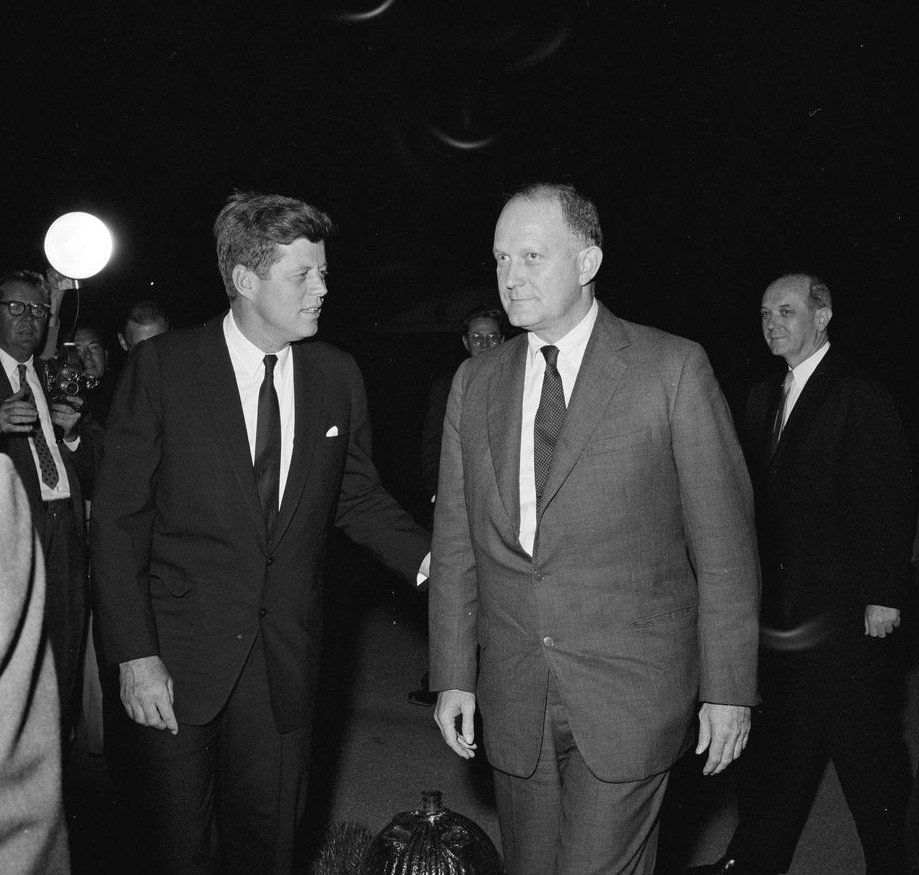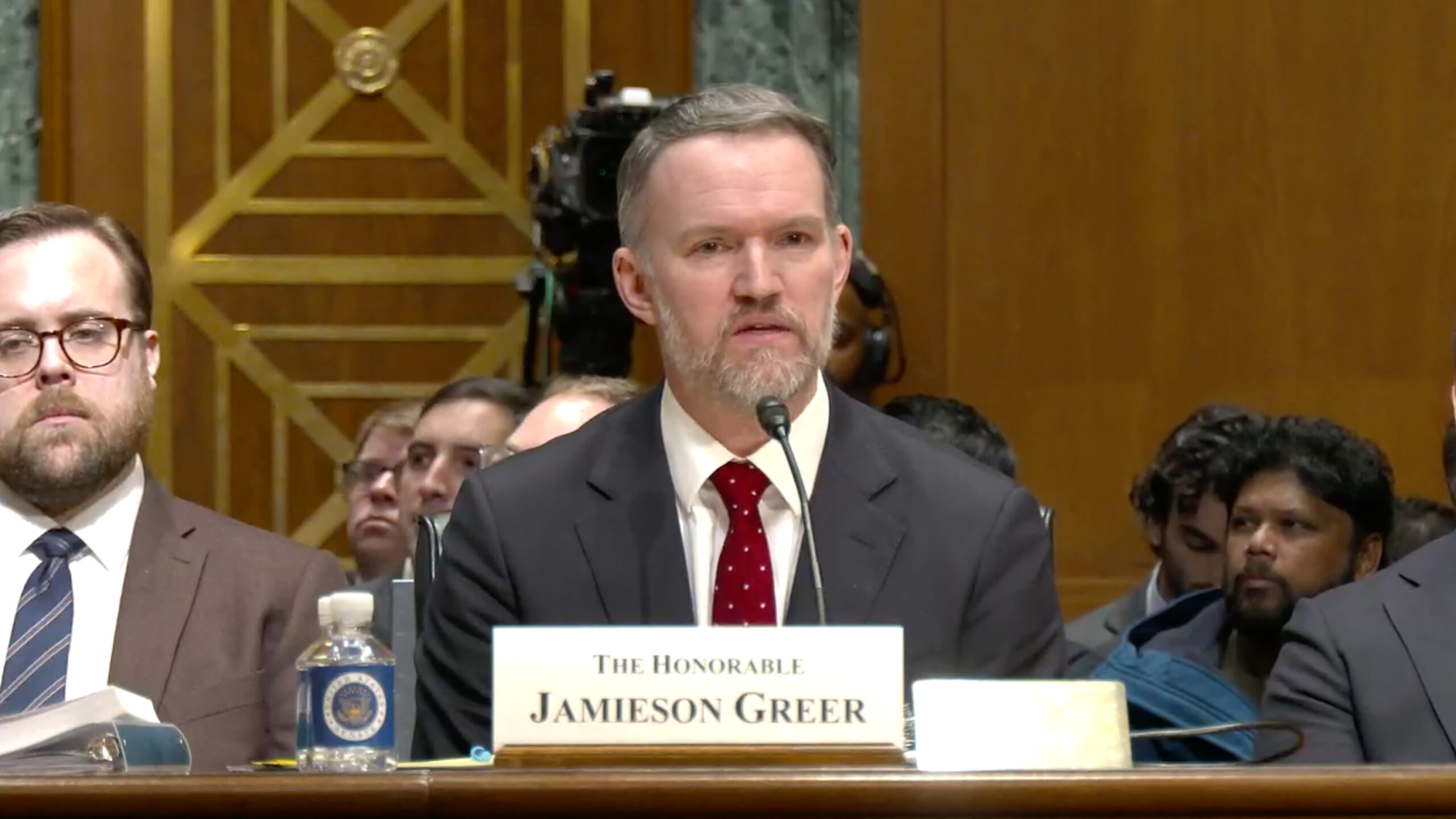By Steven L. Byers, PhD and Jeff Ferry
With the introduction of the Baldwin-Hawley bill (S 2359) into the US Senate, capital flow management tools are once again an important issue.
The bill, entitled the Competitive Dollar for Jobs and Prosperity Act, envisages using a Market Access Charge on foreign purchases of US financial assets to realign the dollar. It is worth looking at how a 1960s capital management tool, the Interest Equalization Tax, achieved a related objective, reducing US capital outflows, to prevent a drain on the nation’s gold reserves.
Over the decade beginning in 1960, the US current account and capital account experienced drastic swings that had substantial macroeconomic consequences. In response, the US passed the Interest Equalization Tax (IET) to address large distortional international capital flows. The IET was in effect from 1963 until 1974. It served as an additional macroeconomic policy tool that successfully reduced the US balance of payments deficit by reducing purchases of foreign assets by US entities.
Following World War II, the United States embarked on massive programs of lending and investment abroad through massive military and economic aid programs. We were the world’s productive engine, with much of the world’s exports emanating from our immense industrial capacity. But, by the late 1950s, other industrial powers were catching up to the US, and the US was expending more dollars abroad (capital outflows) than it was able to attract, making it a net lender to the rest of the world. The fear was that the US needed to invest in its domestic economy and it would lose it competitive position if it did not have sufficient capital to finance the investment.
To further complicate things, as part of the Bretton Woods system of fixed exchange rates, the US maintained gold at a price of $35 per ounce, and holders of dollars could exchange them for gold at will. If, for some reason, all the foreign countries holding US dollars decided to exchange their dollar holdings for gold it could have had catastrophic effects on the US and international monetary system. In response to the potential dangers and the declining stock of US gold, on July 18, 1963, President Kennedy sent a special message to Congress on the deteriorating balance of payments caused by the large, long-term capital outflows. The President believed that administrative and legislative measures were required to make “inroads into the hard core of our continuing payments deficit,” and he especially emphasized “the necessity of improving this Nation’s over-all long-range economic performance—including increased investment and modernization for greater productivity and profits, continued cost and price stability and full employment and faster growth.”
To address long-term capital outflows, the President identified three possible solutions to the problem. The first would be to increase long-term US interest rates, while the second would be direct capital controls. Higher interest rates would cause higher unemployment and economic contraction in the US economy. The second solution would be a rigid impediment to the free flow of capital. The third solution suggested by the president was in the form of a tax proposal, which he urged Congress to enact. The President called it an “Interest Equalization Tax.”
An interest equalization tax is intended to compensate for the difference in yields between foreign and domestic securities. When applied to capital inflows, it is a capital import tax. When applied to capital outflows it is a capital export tax. The IET was a tax on capital outflows.
For domestic US companies and others who are lending overseas, it effectively increased the cost of foreign capital, making returns on foreign assets closer to the returns on comparable US assets. Generally, the tax was estimated to increase the cost to foreigners of obtaining capital in this country by one percent. The intended effect was to reduce the flood of foreign securities offerings in the US and at the same time maintain economic growth and free capital movement.
Kennedy’s Treasury Secretary Douglas Dillion (pictured above with JFK) believed the tax would provide the means by which external equilibrium would be restored by increasing the relative profitability of investment in the United States; and second, the tax would be instrumental in reducing gold outflow as foreigners would accumulate fewer dollars and therefore exchange less of them for gold. Dillion stated that the tax would have a positive effect on the balance of payments, yet it would not impede access to American markets by foreigners. Market prices would continue to determine the allocation of funds for investment in foreign securities. The tax, if applied correctly, would raise the cost of acquiring capital in the US, aligning it with the costs prevailing elsewhere.
The tax applied to US persons’ acquisition of stock of a foreign issuer, or of a debt obligation of a foreign obligor, if the obligation had a period remaining to maturity of 3 years or more. The tax on the acquisition of equities (stock) issued by foreign entities was 15 percent of the actual value of the stock. The tax on the acquisition of foreign debt varied by length of maturity, from 2.75 percent for debt with maturity of three years up to 15 percent on debt with maturity of 28.5 years or more.
The IET worked. By 1969, the US external position had reversed from where it was in the early 1960’s, see figure 1. In the years right after the interest equalization tax was put into effect, the net position in the US international financial account (defined as net US acquisition of foreign financial assets less net US incurrence of long-term liabilities to foreigners) declined from approximately $1.6 billion in 1964 to -$75 million in early 1968. The positive figure in 1964 meant that the US was exporting capital on the long-term account, while the negative figure in early 1968 indicated the flow had reversed.

Testifying at the hearing before the Senate Finance Committee in 1969, Paul Volker, then Undersecretary of the Treasury for Monetary Affairs, said, “we need the balance of payments protection afforded by the interest equalization tax. There is no denying that our balance-of-payments position continues to be a subject of concern. The source of this concern is the disappearance of our trade surplus. From an annual average of about $5 billion in the early 1960’s, from a peak of about $6.8 billion in 1964, this surplus has rapidly evaporated. Consequently, our total current-account position , including net investment income, other service transactions and transfers as well as trade, has shown a large deterioration… Fortunately, our overall payments position has been supported by capital inflows….Supported by this clear evidence of its effectiveness and the continued need dictated by our payments position, the proposed extension of the Interest Equalization Tax is the minimum insurance necessary to guard against the risk of large capital outflows.”[1]
From 1968 on, the economic situation worsened, as rising US inflation made US goods less competitive. In 1968, our current account surplus fell by 76 percent in a single year, from $2.6 billion to $611 million. In 1970, President Nixon’s pressure on the Federal Reserve led to a cut in US interest rates, boosting US capital outflows beyond the capacity of the IET to restrain them. In 1971, Nixon took the US off the international gold standard, imposed a 10 percent tariff on all US imports and allowed the dollar to float against other currencies.
In a regime of floating exchange rates, the post-1971 world was very different from the fixed exchange rate world in the earlier period. Before 1971, excessive capital outflows ran up against the barrier of a limited amount of gold to underwrite international confidence in the dollar. After 1971, excessive capital outflows could drive a currency down, leading to inflation and a crisis of confidence. Excessive capital inflows could drive a currency up, making its goods and services uncompetitive.
Since the 1990’s, the US has experienced a continual current account deficit, see figure 2, and large, persistent capital inflows (increasing liabilities to the rest-of-the-world). Large, persistent capital flows into the US result in increased demand for US dollars, leading to an overvalued dollar exchange rate that has reduced the competitiveness of US products in domestic and foreign markets. The ramifications of an overvalued dollar are well documented; decimation of our manufacturing and strategic industries necessary for national defense, urban blight, and hollowed out communities outside the cities. The quality of employment worsened substantially as America transferred our industrial base overseas to surplus countries and become more reliant upon low wage/low hour service economy jobs.

Back in 1980, MIT economics professor Rudi Dornbusch recommended enacting an interest equalization tax for the UK economy. He observed that Margaret Thatcher’s policy of high UK interest rates to eliminate inflation had led to an overvalued pound sterling. As he explained at a committee hearing in the UK House of Commons: “If pursued over any period of time the [high exchange rate policy] policy will lead to a disruption of industry; reduced investment, shutdowns, declining productivity, loss of established markets and a deterioration of the commercial position.”[2] Dornbusch recommend an IET. He explained his logic in a Brookings paper that year: “A real interest equalization tax is warranted to repel capital inflows and thus maintain a more nearly constant real exchange rate.”[3]
Today’s overwhelming economic problem is that the US dollar’s overvaluation has made US industry and farm goods less competitive than justified by the economic fundamentals. As in the 1960s, the tradable goods markets require a lower US dollar exchange rate to allow our international goods trade to balance. However, the depth of US capital markets and the attractiveness of the US as a ‘safe’ destination for huge volumes of investment dollars, lead to an excessively high dollar exchange rate. An interest equalization tax on inflows can bridge the gap, redirecting just enough capital flows to move the dollar to a level consistent with healthy, balanced trade in goods. Such a tax, now known as the Market Access Charge, appears in the Competitive Dollar for Jobs and Prosperity Act, introduced in the Senate last year by Senators Tammy Baldwin and Josh Hawley.
[1] Hearing before the Committee on Finance United States Senate, Ninety-First Congress, First Session on H.R.122829, An Act to Provide and Extension of the Interest Equalization Tax, and For Other Purposes, September 3, 1969.
[2] Treasury and Civil Service Committee [1980, pp 71-72]
[3] Dornbusch, Rudiger, “Exchange Rate Economics: Where Do We Stand?” in Brookings Papers on Economic Activity, 1980, Pg. 184, footnote 30.












